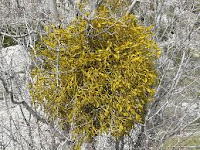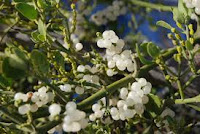Tiger nuts, from the Cyperus family have been with us for millennia. They were cultivated by the ancient Egyptians and found in paintings in the tomb of Rekhmire. In the tomb was an inscription detailing how to make small loaves of a mixture of tiger nuts and honey. This is that ancient recipe: - First of all a quantity of tiger nuts should be ground in a mortar until they are of the consistency of flour. Put this in a bowl with honey and mix to form a dough. Then put the mixture in a pan with a little fat and cook over a low fire until a firm paste has formed. This should smell toasted but not burnt. Remove the pan from the heat and allow to cool then take a little of the paste at a time and form into conical “loaves.” This was probably one of Rekhmire’s favourite foods and the recipe would have been written down so that it could be made for him in the next world.
 Cyperus esculentus loves to grow in marshy ground and is a member of the sedge family so it is a relative of Nut Grass. It is also known as Yellow Nut Sedge. Other names for tiger nuts include Earth almond and Zulu nuts. It is related to Cyperus papyrus which grew abundantly in ancient Egypt along the banks of the Nile, and from which paper was made. It is also related to Cyperus rotunda which grows in south Asia. The later has been used in the Indian subcontinent in medicine for centuries, as a remedy for all manner of ailments.
Cyperus esculentus loves to grow in marshy ground and is a member of the sedge family so it is a relative of Nut Grass. It is also known as Yellow Nut Sedge. Other names for tiger nuts include Earth almond and Zulu nuts. It is related to Cyperus papyrus which grew abundantly in ancient Egypt along the banks of the Nile, and from which paper was made. It is also related to Cyperus rotunda which grows in south Asia. The later has been used in the Indian subcontinent in medicine for centuries, as a remedy for all manner of ailments. Medical trials of this have shown that it has anti-inflammatory and immunostimulatory properties and it is useful in the treatment of atherosclerosis. This plant is known as motha or nagarmotha in Hindi and mustak or mustaki in Sanskrit. It has been proven to have potent antioxidant properties just like the tiger nuts from Cyperus esculentus, which come from Spain, and are cultivated in the Valencia area.
 |
| tiger nut crop drying |
Spanish tiger nuts have come under close scrutiny lately and it has been found that the oil obtained from them has similar properties to olive oil. This plant’s aerial parts look like those of rice or vetiver. Tiger nuts are also more nutritious (and I think tastier than peanuts). They contain minerals: - chromium, sodium, phosphorous, magnesium, manganese, iron, copper and zinc, and have a high vitamin E and C content. Apart from all these beneficial ingredients, they also contain all the amino acids and some of the B-complex vitamins. They are suitable for diabetics and can be eaten raw, roasted or dried.
 They have been known for 4000 years, and are not actually a nut but a small tuber, which is high in fibre, proteins and natural sugars. They are a good source of energy and have a rather curious flavour, which is a little like caramel, and this is perhaps more pronounced because they are chewy.
They have been known for 4000 years, and are not actually a nut but a small tuber, which is high in fibre, proteins and natural sugars. They are a good source of energy and have a rather curious flavour, which is a little like caramel, and this is perhaps more pronounced because they are chewy. Tiger nuts are grown from April through to September, the dried during September and October until they are finally harvested in November/December. Like rice they need irrigation on a weekly basis, and seem to be particularly well adapted to the climate around the Spanish Mediterranean coast.
They are also grown in Egypt where they are used in perfumes, food and medicine. You may have had ice cream flavoured with them or biscuits. It has been shown that they can help prevent heart attacks and thrombosis and that they increase blood circulation, as they, as well as their Asian relatives have potent antioxidant properties. They can also help to decrease the risk of some cancers including colon cancer partly due it would appear to the high content of soluble glucose in the nuts.
Keen anglers love tiger nuts as they are an excellent bait for carp. Another interesting fact about the Cyperus rotunda from Asia is that it is used to increase the size of female breasts! (So is imli or tamarind of course.) Cyperus esculentus is classed as a noxious weed in California and is on the B list there.
In Ayurvedic medicine, rotunda is used for mental problems including psychosis, as an emmenogogue, for wound healing, for poor eyesight, to regulate body weight, improve digestion, for skin disorders, as well as for helping uterine contractions in child birth.
Below is a recipe for a refreshing drink which has been made in Spain for centuries.
HOCHATA DE CHUFAS (TIGER NUT “MILK”)
250 gr tiger nuts
200 gr sugar
1½ litres of water
lemon rind, grated
1 cinnamon stick and a little cinnamon powder
Method
Soak the tiger nuts in several changes of water for 24 hours.
Grind the tiger nuts and then blend with the lemon zest in ½ litre of water.
Add the rest of the water and stir well, then strain through a layer of cloth.
Now add the sugar and cinnamon stick and keep stirring it until the sugar dissolves.
Put in the fridge to chill for at least 2 hours and serve in glasses of crushed ice, sprinkled with a little cinnamon powder.
This has Taste and is a Treat.












































